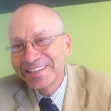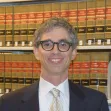Exclusives
FEATURE
The Essential Principles of Brownfields Regeneration
With "brownfield" (former industrial or commercial sites) development on the rise, it is essential for planners to have a clear process for approaching this tricky development type, say Justin B. Hollander, Niall G. Kirkwood and Julia L. Gold.
BLOG POST
Planning Faculty Blogs
<span style="widows: 2; text-transform: none; text-indent: 0px; border-collapse: separate; font: medium 'Times New Roman'; white-space: normal; orphans: 2; letter-spacing: normal; color: #000000; word-spacing: 0px; -webkit-border-horizontal-spacing: 0px; -webkit-border-vertical-spacing: 0px; -webkit-text-decorations-in-effect: none; -webkit-text-size-adjust: auto; -webkit-text-stroke-width: 0px" class="Apple-style-span"> <div style="background-color: #ffffff; font-family: Verdana, Arial, Helvetica, sans-serif; font-size: 10px"> <p class="MsoNormal"> <span>One of my first posts back in 2007 dealt with planning faculty blogs (see </span><a href="/node/24748" target="_blank">http://www.planetizen.com/node/24748</a>).<span class="Apple-converted-space">
FEATURE
A Week of Biking Joyously
On a fact-finding mission to the Netherlands, a delegation of California public officials marvel at the promise of bicycles for 21st Century transportation. Jay Walljasper gives this personal account of the trip.
BLOG POST
The Unbounded Home
<span><span style="font-size: x-small">When you buy a house, you might think that you are in control of that house and its value. But in reality, your house’s value depends on a wide variety of factors beyond your control, such as the perceived desirability of your neighbors, local highway and transit policies, and trends in national and regional housing markets. Your home may be your castle in a physical sense- but its value is heavily affected by what goes on outside the residential setting.<br /> <br /> In her new book The Unbounded Home, University of Chicago law professor Lee Fennell addresses the implications of this reality and of homeowners’ attempts to reassert control over property values through restrictive covenants and zoning.<br />
FEATURE
Let Charles be Charles
When Queen Elizabeth II -- now 84 -- passes on, Prince Charles will finally become king. With a history of active engagement in the built environment, will King Charles become a silent monarch, as some have claimed? David Sucher hopes not.
BLOG POST
Peace, Love, Understanding, and Mobility
<div>On a day we remember how hate can be manifest into reckless slaughter, perhaps we can find a moment to also remind ourselves that the provision of mobility as a basic tenet of urban planning is one small but nonetheless fundamental way we can strengthen the brotherly ties between neighbors, nations, cultures, humanity. ~ian</div><div><br /></div><p> </p>
BLOG POST
Dear Uncle Sam: Transit Design Really Does Matter
<p> <span style="line-height: 115%; font-size: 12pt"><span style="font-family: Calibri">Over the past decade more than $75 billion in public dollars has been invested in rail transit. Los Angeles, Seattle and Denver alone are investing an additional $65 billion to expand their systems and enhance the livability of their communities. The federal government will be asked to play a major role in funding each of those systems. Up until now the federal role in major transit investments has largely avoided the question of how we ought to design our transit systems to be good neighbors and leverage livable communities. </span></span> </p>
BLOG POST
Urbanist Thinking at the Temporary Metropolis of Burning Man
<p> It's already disappearing. The temporary city that forms during the annual Burning Man event is fading away, as the tens of thousands of people who traveled out to live in the desert of northwestern Nevada for the past week have filed out of the void and returned back to the rest of the world. The event's organizers and volunteers are still erasing the traces of the event, from demolishing structures to removing fencing to picking up trash. Within another week or so, the entire city will have disappeared.<br /> <br /> It's an interesting way for a city to exist -- just a few weeks at a time, once a year. But it's been working for Burning Man and Black Rock City, the name of that temporary city that forms and disbands almost as soon as it comes to full life. On top of what's already a unique experiment in citymaking, the theme of this year's event was Metropolis, which spurred the tens of thousands of people and artists who make up the city to think a little more about how their "party in the desert" is actually a little city and community (the fourth largest city in Nevada during its run), and how it relates to their world beyond the desert.
BLOG POST
Incorporating Health Objectives Into Transport Planning
<p style="margin: 0cm 0cm 0pt" class="MsoNormal"> <span style="font-family: Times New Roman; font-size: small">Planning decisions often have significant indirect effects. As planners, our challenge is to clearly describe these impacts and quantify them as much as possible so they can be incorporated into decision making. An example of this is the effect that transportation planning decisions have on human health. These impacts are significant but often overlooked or undervalued in the planning process. I have worked on several research projects that explore the nexus between transport planning decisions and public health, and are developing practical tools for incorporating them into planning. Let me share some of my current thinking about this issue. </span> </p>
BLOG POST
Snow, Cars and Growth
<p> A couple of years ago, I was listening to a friend explain why she left Rochester for Jacksonville. "I was tired of digging my car out of the snow." It occurred to me that the nexus between driving and winter weather may at least partially explain the decline of America’s northern Rust Belt. </p> <p> Here’s why: car care and storage makes snow a bigger bother than might otherwise be the case: if you don’t have a heated garage, you have to dig your car out of the snow every day, and if you park on the street you may have to constantly move your car to accommodate municipal snow removal. </p>
BLOG POST
Plans, Places, and Processes: Do You Need to Travel to Understand Them?
<span style="widows: 2; text-transform: none; text-indent: 0px; border-collapse: separate; font: medium 'Times New Roman'; white-space: normal; orphans: 2; letter-spacing: normal; color: #000000; word-spacing: 0px; -webkit-border-horizontal-spacing: 0px; -webkit-border-vertical-spacing: 0px; -webkit-text-decorations-in-effect: none; -webkit-text-size-adjust: auto; -webkit-text-stroke-width: 0px" class="Apple-style-span"><span style="font-family: Verdana, Arial, Helvetica, sans-serif; font-size: 10px" class="Apple-style-span"> <p class="MsoNormal"> <span>In recent blogs I have written about places and plans in many different locales and through time. Students often ask, “do I need to visit places to know about them”?
BLOG POST
The Search for Scientific Validation: When Our Feelings Are Just Not Good Enough
<!--StartFragment--><p style="margin-bottom: 14pt; line-height: 16pt" class="MsoNormal">Planners are taught to be analytical thinkers who use quantitative data, but also qualitative research. Remember the Myers Briggs personality test? It assesses an individual’s personality based on four preferences: A focus on the outer world (extraversion) or inner world (introversion); basic information (sensing) or interpretation and meaning (intuition); making decision based on logic (thinking) or people and special circumstances (feeling); dealing with the outside world with clear decisions (judging) or staying open to new information and options (perceiving).<span> </span>As planners, we are constantly in conflict with these preferences as we straddle the world of technician and analyst.
FEATURE
Post-Katrina New Orleans: Focusing on What Could Be
Patrick L. Phillips, CEO of the Urban Land Institute, reflects on the state of rebuilding efforts in New Orleans on the fifth anniversary of Hurricane Katrina. He sees an impressive level of planning, momentum and cooperation among stakeholders.
BLOG POST
Changing Travel Demands: Implications for Planning
<p> <span style="line-height: 115%; font-family: 'Calibri','sans-serif'; font-size: 11pt">The graph below shows the most recent USDOT vehicle-travel d</span><span style="line-height: 115%; font-family: 'Calibri','sans-serif'; font-size: 11pt">ata covering the last 25 years. Although vehicle-miles of travel (VMT) grew steadily during most of the Twentieth Century, in recent years the growth rate stopped and even declined a little. It is now about 10% below where it would have been had past trends continued.</span> </p> <p> <span style="line-height: 115%; font-family: 'Calibri','sans-serif'; font-size: 11pt"><img src="http://www.vtpi.org/images/VMTtrends.jpg" alt="US VMT Trends" title="US VMT Trends" width="656" height="359" /></span> </p>
BLOG POST
Do You Have Innovative Smart Growth Projects That Need Funding?
<!--StartFragment--><p class="MsoNormal"><!--StartFragment--></p><p class="MsoNormal"><span style="font-size: 13px; font-family: Verdana" class="Apple-style-span">As the post-recession economy continues to plod along, those in the non-profit sector continue to face stiff funding competition. Organizations furthering the smart growth/new urbanism cause may find this to be particularly frustrating, as re-working how and where America builds has never been so important. <span> </span></span></p>
BLOG POST
Campaign Fundraising Holds City Hostage
I wasn't even in Los Angeles yesterday, and for once I'm glad. Everything from my Facebook feed to the morning headlines told me that traffic on the Westside yesterday afternoon was so awful that only a parade of obscenities accompanied by words like "cluster" and "show" would have sufficed to describe it. Hardened locals were driven nearly to tears behind the wheels of their unmoving cars. <br /><br />The president was in town. <br />
BLOG POST
Park51, Planning and the Freedom of Religion
<span><!--[if !supportEmptyParas]-->As planners, we are accustomed to (and expect) some types of urban development proposals to attract controversy. Whether the opposition is to new roads, higher-density housing or undesirable land uses such as industries or prisons, such controversies are becoming far more common as environmental, economic and social issues become more pronounced and widely understood. In most cases, we generally assume that we can make use of a suite of engagement strategies to engage stakeholders and try to resolve typical development conflicts. </span>
FEATURE
Making Sense of Neighborhood Structure
Planner Sam Gennawey details a public participation exercise he regularly uses, taken from the ideas of Christopher Alexander, that makes complex ideas simple for public understanding.
BLOG POST
How To Raise Fares
<p class="ecxMsoNormal"> A couple of weeks ago, I was on a bus in Chicago and noticed something that I had not noticed before- that how you paid to get on the bus affected how long you took to get on the bus.<span> </span>People who flashed monthly passes boarded in a few seconds.<span> </span>People who put in dollar bills got on a lot more slowly, as they fumbled for the right number of bills.<span> </span>People who had to pay change took longer still.<span> </span> </p> <p class="ecxMsoNormal"> So to speed buses’ on-time performance (pun intended) transit agencies should encourage the former and discourage the latter. </p>
FEATURE
Beyond the Priesthood
In 1995, author and planning authority Peter Katz wrote an article scolding planners for being "planners who talk" rather than "planners who draw". The original article generated much controversy, and appears here with a postscript added by Katz that reveals a glimmer of hope for the planning profession in the U.S.
Pagination
EMC Planning Group, Inc.
Planetizen
Planetizen
Mpact (formerly Rail~Volution)
Great Falls Development Authority, Inc.
HUDs Office of Policy Development and Research
NYU Wagner Graduate School of Public Service
Urban Design for Planners 1: Software Tools
This six-course series explores essential urban design concepts using open source software and equips planners with the tools they need to participate fully in the urban design process.
Planning for Universal Design
Learn the tools for implementing Universal Design in planning regulations.


































